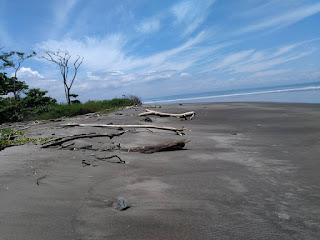2012 Arrival
Narco sea
It all started that day February 14, 2012, when Dr. Máxima Umiña met again with the health promoters of the OCAME who survived the pandemic in order to remember what that peasant organization was where her father, also a doctor, was an of its instructors in 1976, years in which Ecuador, Chile, Bolivia, Argentina, Brazil, lived the so-called Plan Condor, to exterminate the so-called communists of the region, after the death of the president of Chile, Salvador Allende.
His father told him that his surname Umiña, of Manabi origin, came from a family of healers of the Bahia culture, a pre-Columbian culture that lived in what is now Bahia de Caráquez 2,500 years ago and apparently came from somewhere in Asia. or from Oceania. This culture had the sea as its goddess, who was represented by a woman called UMIÑA, a goddess to whom they prayed and worshiped because she cured them of diseases. For this reason, since she was a child, she thought that she had the gift of healing and just by putting her warm hands on the abdomen of the sick, she relieved them of terrible colic. Although he was born in Quito, he always looked for the sea, where his mother was from, born in the city of Esmeraldas, and on his vacations, his father, while he was a medical student at the Central University, visited one of the last places with a virgin jungle of the Pacific Ocean of South America, Muisne, a canton that now houses the first Marine Reserve in South America, the Galera San Francisco Reserve, where the Muisne Mangrove Reserve and the Tropical humid forest reserve, the Mache Chindul reserve, lived in where rivers are born they flow into the largest rivers on the Ecuadorian coast, such as the Daule that flows into the great Guayas River, after traveling more than 1000 km in the most fertile valley of the South American coast, I the Qinindé River, a tributary of the great Rio Esmeraldas, the river that beats the Pacific and where the ocean cannot rise at high tide, as in other rivers.
Near the island of Muisne, there are 9 small beaches up to Atacames, cut by cliffs that are a refuge for a great variety of marine life such as octopus, crabs, shells, clams, sea cucumbers, corals, snails of all kinds, and as far as they go. the whales, the manta rays, the dolphins with the El Niño currents from December to June, which is when the fishermen move south to Chile with the winds they call north in their canoes and sailing boats but now with their motorboats, because fishing is scarce on the surface, from the sea that has warm waters, in which shrimp and prawns abound, while at the bottom the Humboldt current, with its cold waters, has the snook and dorados, which are more difficult to fish in these months, here are very good places to embark and disembark cocaine packages. To the south, the Chamanga Estuary there is a huge inlet from the sea without waves and deep, where deep-sea fishing boats and narco submarines can arrive, which can be hidden in the mangroves that surround it.
From June to December the cold Humboldt Current arrives from Antarctica, Chile, and Peru with the southern winds, cold winds, and waters that accompany the humpback whales, to their breeding sites on the coasts of Ecuador and Colombia, with them they come giant manta rays, then dolphins. These winds and currents push the boats to Mexico and allowed the existence of the oldest shipping culture of the Pacific Coast, the Manteño Huancavlica culture, and of the now called fishermen cholos who live in Chile, Peru, and Ecuador.
Today these cholos fishermen are the best sailors in South America, who use the last mangroves of Ecuador, in the Province of Esmeraldas, and the Colombian Pacific Coast, as the best place to hide narco submarines and speedboats called go fast, and to hide the drug, even at the bottom of the shrimp pools, or the cocaine laboratories, in the camouflaged houses or their mobile laboratories under plastic.
When Máxima arrived at the terminal that day in January 2012, after 8 hours of capital travel watching endless films by Claude Van Dame all the way, she got down almost crippled by the long hours of travel that showed the journey through the Andes down from Quito to Santo Domingo, and then the fertile plains to Esmeraldas. This journey, especially at night, she would repeat almost every week to return to see her daughter, who was in charge of her mother, studying in the capital.
Breathing the hot air, loaded with oxygen and noise from the noisy city of Esmeraldas brought her out of the drowsiness immediately and after collecting her bags she went to the ticket office to buy a ticket to Puerto Nuevo, where she would live to be close to her places of I work in the dispensaries of the Seguros Social Campesino of Boca del Sucio, in the Mache Chindul Reserve, Tres Vías.




Comentarios
Publicar un comentario